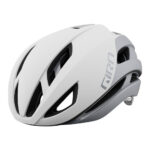Many cyclists find themselves pondering the same question: is it time to ditch the Old Bike for a shiny new model? The allure of the latest technology, like disc brakes and electronic shifting, is strong. But is upgrading always the best move, or can an old bike still deliver a great riding experience? Let’s delve into this common cycling dilemma.
My Trusty Steeds: Why I Still Ride My Old Bikes
I’ve been riding a trusty Omega Alchemy titanium bike for 18 years and a Kinesis TK2 winter bike for 24 years. These aren’t museum pieces though; they’ve seen upgrades. My Omega, originally a 3×10 speed, now boasts a modern R8000 2×11 groupset, new forks, and carbon wheels. This transformation even allowed me to fit wider 25mm tires, a noticeable improvement over the older 23mm limit. Similarly, the Kinesis TK2 is updated with an R7000 groupset. While the shifting is crisper, the wider range cassette on the 2×11 setup doesn’t feel like a significant upgrade in terms of climbing gears compared to the older, closer-ratio cassette. These upgrades have breathed new life into my old bikes, proving their enduring quality.
The Allure of the New: Disc Brakes and Electronic Shifting
The cycling world is constantly evolving, and new bikes are packed with tempting features. Disc brakes promise superior stopping power, especially in wet conditions, and wider tires offer enhanced comfort and grip. Electronic shifting provides effortless and precise gear changes. The thought of a new carbon or titanium frame equipped with 12-speed electronic shifting and disc brakes is undeniably appealing. These modern features are often touted as game-changers, promising a smoother, faster, and more enjoyable ride.
The Cost-Benefit Analysis: Is New Tech Worth the Price?
However, the desire for new technology clashes with the practicalities of cost. New bikes, especially those with high-end components, represent a significant investment. The resale value of older bikes is often minimal, making the financial outlay even more substantial. Upgrading to a completely new bike also means potentially changing wheelsets and other components, adding to the expense. For many of us, the question becomes: does the performance gain from these new features justify the considerable cost? Especially when older, upgraded bikes are still performing admirably.
Performance vs. Ego: Keeping Pace on an Old Bike
In my own experience, I can still keep up with younger, faster riders on my “old bikes.” In fact, when a group ride challenge was issued to use our oldest bikes, mine were still newer than some of the others! This highlights a crucial point: rider fitness and skill often outweigh the marginal gains offered by the latest bike technology. The desire for a new bike can sometimes be more about ego or the allure of the new, rather than a genuine need for improved performance.
Conclusion: The Enduring Value of an Old Bike
Ultimately, the decision to upgrade or stick with an old bike is a personal one. While the advancements in modern cycling technology are undeniable, a well-maintained and thoughtfully upgraded old bike can still provide a fantastic riding experience. For many cyclists, the cost of constantly chasing the latest technology is hard to justify when their trusty “old bike” continues to perform admirably. The joy of cycling isn’t solely about having the newest gear; it’s about the ride itself, and a good old bike can deliver that joy just as effectively.

